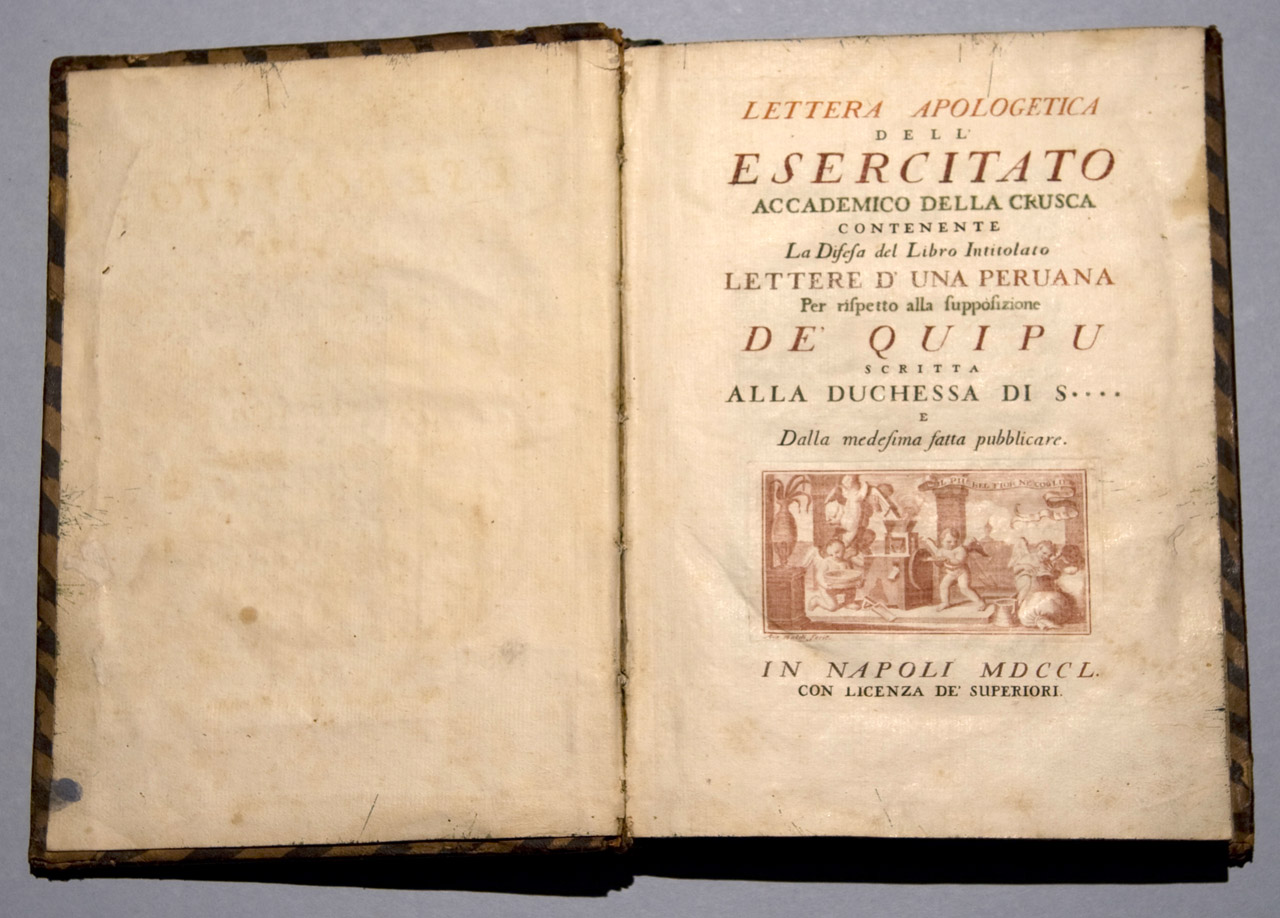Sansevero, Raimondo di Sangro, principe di. Lettera apologetica dell'Esercitato accademico della Crusca... Naples, 1750.
Prince Raimondo di Sangro was a notable polymath and an infamous Grand Master of the Free Masons, who published Lettera apologetica... (1750) with his typography. The book defends a novel by Madame Graffigny that is composed of thirty-eight letters in quipu (knot) from an Inca Princess Zilia to her beloved Aza. Di Sangro believed that quipu—an Incan system of knotted cords used for statistical information—was a writing system. The displayed table on the final image is di Sangro’s “quipu” transcription of a Peruvian song.
The table shows the leading words, or parts thereof, which served to reduce the short song above to quipus. These words or parts are in red.
“Beautiful maiden, this is your brother; your small jug is breaking and for this // Reason there is thunder and lightning, also with thunderbolts; you Royal Maiden, // Your waters so beautiful, will give us with rain. Also at the same time, you make // For us hail and snow as well. The Maker of the world, the God that gives it life, // the Great Viracocha, for that role places you and gives you a soul.”
Because the words above were transcribed in Spanish, they should be pronounced as if they were Spanish words. One should say ‘chi-glia’ when reading ‘qui-lla,’ ‘may-ti-gnu’ for ‘may-ti-nnu,’ and so on.
Italian translation by University of Miami Professor Maria Galli Stampino; Spanish translation by Giselle Reyes-Cotto.
Click to access the Ibisweb record of this book.

